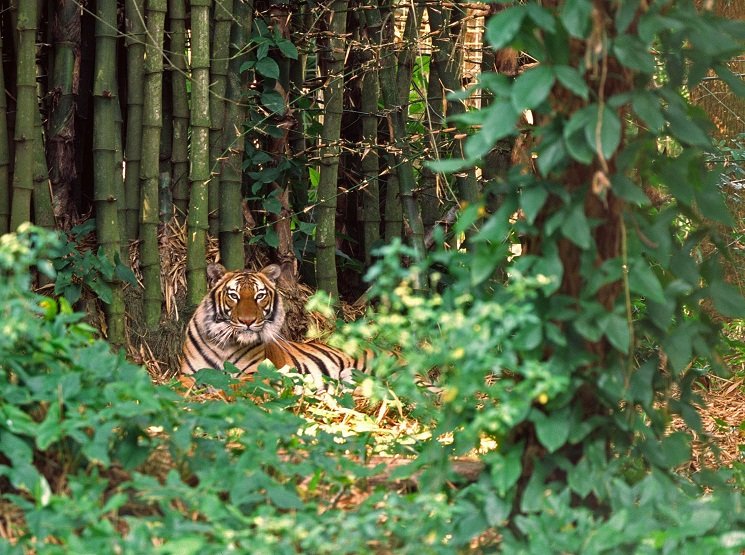
You might be wondering, “What does a tiger’s home look like?” Picture dense jungles filled with towering trees, winding rivers, and an orchestra of wildlife sounds. That’s the Malayan tiger’s playground. Sadly, their territory is shrinking due to human impact, but let’s dive deeper into their world and discover where these magnificent creatures thrive.
Understanding the Malayan Tiger’s Habitat
Malayan tigers primarily roam the forests of the Malay Peninsula. This region boasts a diverse range of habitats, including tropical rainforests, montane forests, and scrubland. These environments offer a rich tapestry of flora and fauna, providing them the cover they need for hunting and shelter.
Tropical Rainforests: This lush habitat is like an all-you-can-eat buffet for Malayan tigers. With thick vegetation, it supports a variety of prey, including deer, wild boar, and smaller mammals. The dense canopy also gives them stealth, allowing them to stalk their prey without being easily spotted.
Montane Forests: As we move upwards in elevation, the landscape changes. Montane forests are cooler and often shrouded in mist. Malayan tigers have adapted to roam these higher altitudes, using the rugged terrain to their advantage. Here, they can hunt different prey and remain elusive against human encroachment.
Distribution Across Southeast Asia
Malayan tigers are found primarily in Malaysia, but their range includes some parts of Thailand, particularly the southern regions. This limited distribution makes them unique but also vulnerable. Over the years, their population has dwindled due to habitat loss and poaching.
If you were to trace their territory, it would look like a patchwork quilt of protected areas. National parks like Taman Negara and Endau-Rompin serve as safe havens where tigers can roam without the threat of human interference. Unfortunately, these pockets of habitat are isolated, making it hard for tigers to find mates and maintain genetic diversity.
The Importance of Protected Areas
Protected areas play a critical role in ensuring Malayan tigers have the space to thrive. These locations not only provide a sanctuary for tigers but also help preserve the biodiversity of the region. By maintaining these areas, conservationists work to create corridors that connect different habitats, allowing tigers to move freely and safely.
Here’s the thing—without these protected zones, Malayan tigers risk extinction. Conservation efforts have been ramped up, with organizations working tirelessly to combat poaching and habitat destruction. Your support can make a difference, whether through awareness or direct involvement in conservation projects.
Threats to Their Habitat
While it’s stunning to think about where Malayan tigers live, it’s equally crucial to consider the threats they face. Deforestation is one of the biggest challenges. As timber companies and agriculture expand, forests vanish, leaving tigers with nowhere to roam.
Human Encroachment: Imagine trying to live in a beautiful house, but someone keeps knocking down your walls! That’s what’s happening to Malayan tigers. As towns and farms spread, the space they need to hunt and raise their young gets smaller and smaller. This not only affects their numbers but also increases the likelihood of human-wildlife conflict.
Poaching: Sadly, Malayan tigers are targets for poachers who hunt them for their beautiful fur and body parts. This illegal activity further diminishes their population and disrupts the balance of the ecosystem.
The Role of Climate in Their Habitat
Climate plays a significant part in the habitat of Malayan tigers. They thrive in humid environments with consistent rainfall. Climate change poses a severe risk, altering these conditions and impacting the ecosystems they rely on.
If temperatures rise or wet seasons shift, the delicate balance of their habitat can be disrupted. For instance, certain prey might migrate to cooler areas, leaving the tigers without food. Reduction in rainfall can also affect the availability of water sources, crucial for both tigers and their prey.
Adaptations to Climate
Interestingly, Malayan tigers have adapted to thrive in specific local climates. Their thick fur helps them stay warm in cooler montane regions, while their keen senses make them effective hunters even in dense undergrowth. However, as the climate continues to change, these adaptations may not be enough.
Conservationists are closely monitoring the situation and working on strategies to mitigate these climate impacts. They’re like detectives piecing together clues to ensure the Malayan tiger continues to roam the forests of Southeast Asia.
Conservation Efforts and Future Prospects
The future of Malayan tigers depends heavily on ongoing conservation efforts. Organizations around the world are collaborating with local governments to implement strategies that protect their habitats and decrease poaching.
Community Involvement: Engaging local communities is crucial. When people understand the importance of preserving these magnificent creatures, they’re more likely to take action. Initiatives that promote eco-tourism can also provide alternative sources of income for communities that might otherwise turn to poaching.
Research and Monitoring: Constant monitoring of tiger populations helps conservationists adjust their strategies. This research can reveal how many tigers are left and where they are moving. It’s like keeping track of a friend’s whereabouts to ensure they’re safe.
In conclusion, understanding where Malayan tigers live is not just a matter of geography; it’s about protecting a symbol of wild beauty. Their habitats in Malaysia and parts of Thailand are under threat, but with concerted efforts, there’s hope for these magnificent animals.
You might be thinking, “What can I do to help?” Every small action counts, whether it’s supporting conservation organizations, spreading awareness, or simply appreciating the rich biodiversity around us. Let’s make sure our children—and generations to come—know what it’s like to see a Malayan tiger in the wild. So, let’s roll up our sleeves and get involved. Together, we can help secure a future for these majestic creatures.

